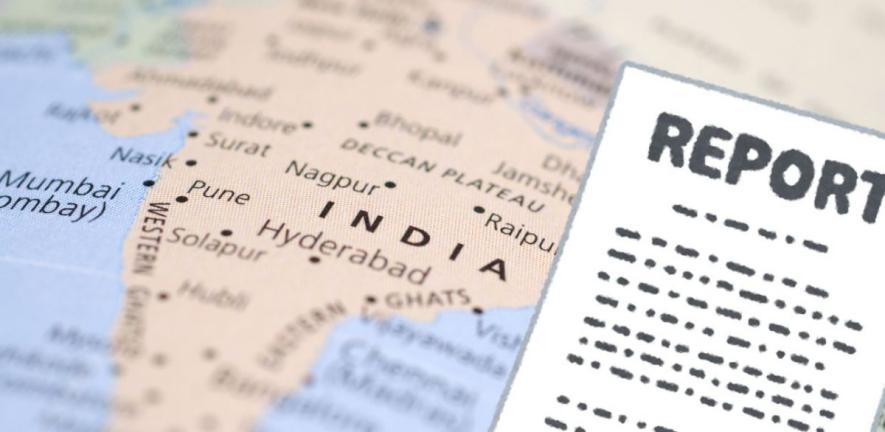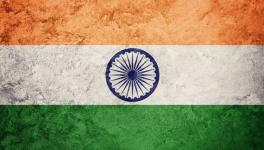India’s Dual Standards on International Reports

The current regime has a dual attitude towards international reports on India, whereby they adopt and highlight reports that show things in a good light but criticise reports for being an interference in the internal matters of India if they point out the problematic human rights record.
—
Imagine a neighbour observing their friend’s garden. It is suffering from clear and visible signs of neglect and overgrowth. Since the neighbour lacks official authority to act, they must carefully advocate to their friend the need for proper care and maintenance without overstepping boundaries.
However, even a mild suggestion of intervention could be met with resistance if the friend, despite the tell-tale signs of disorder and disarray, believes there is nothing wrong.
This scenario describes the current relationship between the US government and the Bharatiya Janata Party (BJP) government in India, in relation to their differing assessments of the 2023 Human Rights Practices report for India.
In line with its constitutional mandate under domestic law, the Bureau of Democracy, Human Rights, and Labour in the US Department of State released its annual publication— the 2023 Country Reports on Human Rights Practices.
For all countries receiving US assistance and all United Nations member States, the reports examine, track and document the state of human rights. This includes 200 countries and territories around the world. India as well as other US allies— Canada, the UK, Australia and New Zealand are also part of this list.
For all countries receiving US assistance and all United Nations member States, the reports examine, track and document the state of human rights.
While none of the other allies publicly dismissed the report, two countries— India and Pakistan— were notable for their public outrage. Pakistan described the contents as “unfair”, based on “inaccurate information”, and “completely divorced from ground reality”.
India echoed these sentiments, although not concurrently.
However, neither country substantially addressed any of the issues raised in the report nor acknowledged any progress or commitment to human rights that would assuage the concerns identified in the report.
This, despite the fact that the data comes from credible sources within these countries, including government agencies. India and Pakistan, instead, led on with denial and refused to engage in any constructive dialogue.
Key findings of the human rights report for India
On the India report, the Ministry of External Affairs (MEA) spokesperson, Randhir Jaiswal called it “deeply biased” and one that reflected a “poor understanding of India”. He further urged the public to attach no value to it since the BJP government was already doing the same.
But was it biased and indicative of a poor understanding of India? A closer analysis of the findings reveals quite the opposite.
Divided into six sections and spanning 80 pages, the report comprehensively addresses various human rights issues across different themes. The data originates from diverse sources, including media reports, government records and NGOs.
Notably, while some highlighted issues, such as reports of arbitrary police violence in Odisha or electoral violence during the West Bengal state elections, fall under the jurisdiction of non-BJP state governments, the majority are the responsibility of the BJP government.
These issues flagged in the report have not only been raised by opposition parties and civil society groups in the past but also by the Supreme Court on multiple occasions, thereby challenging the government’s notion that these issues are rooted in a poor understanding of India’s polity.
Moreover, the report not only underscores the BJP government’s shortcomings in protecting human rights but also underscores key legislative gaps. These are areas where the government lacks adequate laws or policies that could benefit vulnerable groups.
For instance, India currently lacks a robust law addressing the protection, assistance and return of refugees and asylum seekers. While Uniopn and state governments offered assistance and protection to refugees in 2023, a robust legal framework could significantly enhance their ability to support refugees in the long term. This framework should address critical areas such as long-term visas, residence permits, housing and employment opportunities.
India also lacks both a law for granting asylum or refugee status and a system for providing protection to refugees and asylum seekers. Although the Citizenship (Amendment) Act, 2019 aims to address some of these concerns, its constitutionality is pending before the Supreme Court of India and it has already been the subject of widespread criticism and condemnation for its exclusion of Muslims.
While none of the other allies publicly dismissed the report, two countries— India and Pakistan— were notable for their public outrage.
Moreover, the government has refused to pass laws to provide greater relief for certain other vulnerable communities. A notable example was the government’s refusal to recognise same-sex marriage.
Despite the Supreme Court ruling on October 17, 2023, that the power to recognise same-sex marriage lay with the legislature, opposition from the BJP makes it unlikely that same-sex couples will see their unions recognised anytime soon.
Similarly, the colonial ‘marital rape exception’ not only remains enforceable in our statute books, it has now taken on a new avatar in the new criminal codes set to come into effect on July 1, 2024.
This is despite promises from the BJP to ‘decolonise’ criminal laws. The government’s insistence to retain the ‘marital rape exception’ in the new Indian Penal Code even after multiple rounds of stakeholder consultations raises legitimate questions about their commitment to protecting married women’s rights.
Additionally, the report highlights other significant issues, including arbitrary arrests under the draconian Unlawful Activities (Prevention) Act (UAPA), the suppression of free speech and expression by civil society groups critical of the government, increased monitoring and regulation of foreign funding for non-governmental organisations (NGOs) through the Foreign Contribution Regulation Act (FCRA) and instances of militant groups targeting Muslims and Dalits involved in transporting or slaughtering cattle.
The BJP’s dismissal of these findings as ‘biased’ reflects the government’s own bias toward neglecting LGBTQ+ rights, upholding free speech, and enacting better laws to protect refugees of all nationalities and religions.
Dismissing the entire report in such a manner reveals arrogance, belligerence and stubbornness— traits that have become emblematic of the prevailing attitude within the BJP regarding international human rights reports.
Should the US lecture India on human rights?
The BJP’s reaction to the report is multifaceted. On one hand, they criticise the report’s content, questioning the accuracy or completeness of the information presented.
Additionally, they ostensibly object to the US, a country with its own human rights issues, taking on the role of lecturing others. Commentators have already pointed to the United States own limitations in protecting women’s reproductive rights, while simultaneously supporting a nation facing accusations of committing a plausible genocide by the International Court of Justice.
However, it is important to consider the bigger picture. While the BJP has the right to criticise the United States moral authority, this criticism should not overshadow the credible factual observations within the report.
On the India report, the Ministry of External Affairs (MEA) spokesperson, Randhir Jaiswal called it “deeply biased” and one that reflected a “poor understanding of India”.
Furthermore, while the US may not have a moral authority to report on the Indian government’s human rights violations, it surely has a legal one.
In 1965, President Lyndon B. Johnson signed the Foreign Assistance Act of 1965 into law. Section 116(d) of the Act specifically mandates the US Secretary of State to submit annual reports on the human rights situation for two distinct categories of countries.
The first category comprises nations that receive assistance under the Foreign Assistance Act, while the second category includes all other United Nations member countries, irrespective of direct US aid. This practice of issuing human rights reports has persisted since 1977.
The state department, through its domestic and international staff, collects data and assesses human rights conditions in nearly 200 countries and territories globally. These reports serve a dual purpose: they are integral to US foreign policy and fulfill a legal obligation stipulated by Congress.
Moreover, the reports align with the principles delineated in the Universal Declaration of Human Rights, an international agreement ratified by India and numerous other countries.
The way forward
When it comes to foreign reports on India’s progress, the BJP displays a terrible double standard. For instance, just a few days after the US human rights report was released, the International Monetary Fund (IMF) also released a report on India’s financial year 2024 Gross Domestic Product (GDP) growth forecast and predicted that the Indian economy would grow by 6.8 percent in the current fiscal year, with public investment driving the growth.
The BJP’s reaction to the report is multifaceted. On one hand, they criticise the report’s content, questioning the accuracy or completeness of the information presented.
The IMF also revised its growth forecast for India upward from its January projection of 6.5 percent to 6.8 percent. This was lauded by the BJP in its latest press release, along with other reports such as those by the Asian Development Bank, which has also revised its GDP growth forecast for India, raising it to 7 percent for the current fiscal year (2023–24) from its previous projection of 6.7 percent.
That other studies have found India’s growth to be uneven and in need of reform have been ignored, such as a 2023 Reuters poll of economists that found strong quarterly growth, but with a significant portion of consumption centered in urban areas, despite the fact that two-thirds of Indians live outside cities.
Focusing solely on positive portrayals of India, while dismissing critical reports, creates a distorted narrative. This approach overlooks the importance of constructive criticism, a key element in fostering collaborative dialogue with stakeholders, both domestic and international.
Furthermore, seeking external validation for India’s development is not a bad thing per se. However, this pursuit should not overshadow addressing very real internal human rights concerns. These concerns have been rightfully highlighted not only by Western human rights groups, but also by India’s own courts, activists and journalists. So to dismiss them altogether is, for the lack of a better term, ridiculous.
Just as the old proverb warns us that ‘the grass is always greener on the other side’, dismissing domestic criticism creates a blind spot, which in this case, is intentional. Acknowledging these issues, while remaining open to external perspectives, could allow India to address its shortcomings and pave the way for a better future for all its citizens.
Kanav N. Sahgal is Samvidhaan Fellowship Programme Manager at Vidhi Centre for Legal Policy
Get the latest reports & analysis with people's perspective on Protests, movements & deep analytical videos, discussions of the current affairs in your Telegram app. Subscribe to NewsClick's Telegram channel & get Real-Time updates on stories, as they get published on our website.
























